|
A dramatically increased share of renewables and higher energy efficiency have the potential to create benefits of up to $10 trillion annually by 2050, compared to estimated incremental system costs of decarbonization of $1.8 trillion annually, according to a new report by the International Renewable Energy Agency (IRENA) and the International Energy Agency (IEA).
OILPRICE.COM — Global GDP could be boosted by around 0.8 percent in 2050, or $1.6 trillion, while the cumulative gain through increased GDP from now to 2050 will amount to $19 trillion, the two agencies said in their joint report ‘Perspectives for the Energy Transition - Investment Needs for a Low-Carbon Energy System’, which was prepared at the request of the German government to provide input for the G20 presidency. However, the IEA noted that limiting the global mean temperature increase to below 2°C with a probability of 66% would “require an energy transition of exceptional scope, depth and speed”. According to the IEA, the longer-term climate goals can be achieved if emissions peak before 2020 and drop by more than 70 percent below current levels by 2050. In addition, by 2050, almost 95 percent of the world’s electricity would need to be low-carbon, compared to around one-third today. Furthermore, 7 out of every 10 new cars would need to be electric, compared with 1 in 100 today, the IEA said. According to the agency, fossil fuels would still be needed in 2050 – especially natural gas – and are expected to account for 40 percent of energy demand, around half of today’s level. The long-term climate goal achievement would also need on average $3.5 trillion in energy-sector investments each year until 2050, which is around twice the current level of investment. According to IRENA’s input in the report, the energy transition is affordable, but it will require additional investments in low-carbon technologies. Cumulative additional investment would still need to amount to $29 trillion over the period to 2050. This is in addition to the investment of $116 trillion already envisaged in the Reference Case, IRENA said.
1 Comment
Leaves can convert as little as three per cent of sunlight into energy
INDEPENDENT — A record-breaking solar panel that can convert more than a quarter of the sunlight it receives into electricity has been developed by researchers in Japan. The silicon solar cell is so efficient that it turns 26.3 per cent of the energy from the sun into renewable power. In contrast, nature’s ‘solar panels’ – leaves – have a “photosynthetic efficiency” of between three and six per cent. The scientists behind the new panel also said they believed they had found a way to create a one with the maximum level of efficiency considered to be theoretically possible – 29.1 per cent. Writing in the journal Nature Energy, the team from the Kaneka Corporation in Osaka, said: “Improving the photo-conversion efficiency of silicon solar cells is crucial to further the deployment of renewable electricity. “Essential device properties such as lifetime, series resistance and optical properties must be improved simultaneously to reduce recombination, resistive and optical losses. “Here, we use industrially compatible processes to fabricate large-area silicon solar cells … the photo-conversion efficiency is over 26 per cent.” The previous record for solar cell efficiency was 25.6 per cent. Further analysis, the researchers, said “pinpoints a path to approach the theoretical conversion efficiency limit of Si solar cells, 29.1 per cent”. However a statement on the Nature website said the panels were not yet ready to be sold commercially. “Although the study represents a record-breaking efficiency for a silicon solar cell, further work is required before the individual cells can be assembled into a commercially available solar panel,” it said. Houston may be the oil and gas capital of the world, but solar energy may be a better fit, according to a new report.
HOUSTON BUSINESS JOURNAL — Google Inc. announced on March 14 an expansion of its Project Sunroof website, which shows how much money homeowners and property owners can save by installing solar panels on their roofs. The Mountain View, California-based internet search giant used satellite imagery from Google Maps and Google Earth to calculate how much solar power could be collected if rooftop solar panels were installed at more than 60 million buildings nationally. Project Sunroof launched in 2015 with just nine states, and now has expanded to all 50 states, including Texas for the first time. Google found that Houston has the most solar energy potential of any U.S. city with an estimated 18,940 gigawatt-hours of rooftop solar generation potential per year, according to its Project Sunroof data. The average U.S. home consumes 10,812 kilowatt-hours a year, according to the U.S. Energy Information Administration. That means one gigawatt-hour of energy is enough to supply power to 90 homes for an entire year, according to Google. Therefore, if every Houstonian installed rooftop solar panels on every possible home or office building, the Bayou City could generate enough electricity to power 1.7 million homes locally for an entire year. Los Angeles, Phoenix, San Antonio and New York round out the top five cities with the biggest solar energy potential, according to Google. Google's parent company, Alphabet Inc., uses rooftop solar panels and solar farms to power the majority of its facilities and data centers. “If the top 10 cities (nationally) reached their full rooftop solar potential, they’d produce enough energy to power 8 million homes across the U.S.,” Joel Conkling, a Google project manager, wrote in the Project Sunroof report. Solar viability in Houston has seen some mixed reaction. In March 2016, John Berger, CEO of Houston-based Sunnova Energy Corp., said the company hasn’t found the Bayou City to be a great market for solar power. However, one year later, the company announced plans to spend about $200 million in residential solar projects across the country. As of July 2015, Houston had the lowest rate of market penetration for solar power of all the major markets in Texas, according to data from BuildZoom. Still, low adoption rates haven't driven away green energy providers from entering Houston's competitive residential energy market. Installing solar panels can save electricity and help with resale values, according to some reports. Houston home listings touting energy-efficient features can command a higher premium over nonenergy-efficient homes, according to Zillow Inc. More than half the world’s oceans could suffer multiple symptoms of climate change over the next 15 years, including rising temperatures, acidification, lower oxygen levels and decreasing food supplies, new research suggests.
THE WASHINGTON POST — By midcentury, without significant efforts to reduce warming, more than 80 percent could be ailing — and the fragile Arctic, already among the most rapidly warming parts of the planet, may be one of the regions most severely hit. The study, published Tuesday in the journal Nature Communications uses computer models to examine how oceans would fare over the next century under a business-as-usual trajectory and a more moderate scenario in which the mitigation efforts promised under the Paris Agreement come into effect. In both scenarios, large swaths of the ocean will be altered by climate change. Nearly all of the open sea is acidifying because of greenhouse gas emissions. But the researchers found that cutting greenhouse gas emissions could significantly delay future changes, giving marine organisms more time to migrate or adapt. “Things that live in the ocean are used to regular variability in their environments,” said lead study author Stephanie Henson, a scientist at the National Oceanography Center at the University of Southampton in Britain. “It gets warm in the summer and it gets cold in the winter, and species survive that kind of range in temperature or other conditions perfectly well.” But she noted a warming climate could eventually cause changes in the ocean that have never happened before — hotter temperatures, lower pH or less oxygen than have ever naturally occurred. When this happens, some organisms may no longer be able to tolerate the changed conditions and will be forced to migrate, evolve as a species or face possible extinction. There’s a large degree of uncertainty in the scientific community about how organisms will react. But there’s evidence to suggest major challenges ahead. Mass coral bleaching events in the past few years have been largely attributed to unusually warm water temperatures. Large-scale coral death on the Great Barrier Reef last year is thought to be strongly linked to climate change. “So we wanted to know when will climate change actually push the system outside the range of natural variability that organisms are used to,” Henson said. The researchers focused on four specific climate-influenced “drivers,” of marine ecosystems: temperature, pH, oxygen levels and “primary production,” or how much food is available to a community. Some parts of the ocean are already experiencing certain climate-driven changes beyond the limits of their natural conditions. The researchers note in the paper that 99 percent of the open ocean is experiencing a climate-driven change in pH, or ocean acidification. The subtropics and the Arctic are also experiencing sea surface temperatures beyond their natural ranges. And these changes will only continue to spread. Under a business-as-usual climate scenario, the researchers found an alarming portion of the ocean will be affected by changes in multiple drivers at once. By 2030, they projected, 55 percent of the world’s oceans will experience changes in more than one of these factors — temperature and pH, most commonly — beyond the range of natural variability. By 2050, this number rises to 86 percent. The researchers focused on areas where multiple changes are occurring at once. “We think that multiple different factors occurring at the same time probably have different responses in the marine environment than just one factor at a time,” Henson said. “So, for example, the combination of warming and ocean acidification may be even more detrimental than just one of those factors alone.” The projections suggest climate mitigation can stall these effects — at least for a little while. Under the moderate climate scenario, the researchers found, 34 percent of the ocean will be affected by changes in multiple drivers, and 69 percent by 2050. In general, they concluded that climate mitigation can delay the onset of climate-influenced changes by about 20 years. “Mitigation doesn’t stop the emergence of multiple different stressors in the ocean, but it does slow things down quite significantly,” Henson noted. This delay could buy time for organisms to move or adapt to their surroundings, the researchers said. Fast-moving fish may be able to migrate to more hospitable waters, while organisms with speedy generation times, such as plankton, may be able to quickly evolve to their changing environments. On the other hand, organisms in places with very stable environments and low natural variability in their conditions — the subtropics, for instance — may be especially vulnerable to future, climate-driven changes. Certain parts of the world are also likely to see more rapid changes than others. Their projections suggest that the Arctic will be a particular “hotspot” for changes in temperature, pH and oxygen content. Scientists are still struggling to figure out which organisms are mostly likely to adapt or move — and which are most likely to die. But they do know there are bound to be winners and losers and that some changes to marine communities are likely to be long-lasting, if not permanent — long after greenhouse gas emissions have been curbed. Want to see the future of energy? Head west. THINKPROGRESS — California Gov. Jerry Brown (D) recently took a shot at Secretary of Energy Rick Perry, a former Republican governor of Texas. Remarking on Perry’s view of Texas as an energy powerhouse, Brown said, “We’ve got more sun than you’ve got oil.” Recent data shows California coming through. Recently, the state briefly generated enough solar power to meet nearly half of the state’s electricity needs, according to data from the largest grid operator in the state, California ISO. Around midday on Friday, demand reached around 29 Gigawatts (GW), while solar was providing nearly 14 GW of generation — some 9 GW from utility-scale arrays and another 5 GW or so from rooftops and parking lot canopies around the state. California’s renewable energy output, midday on March 3rd. CREDIT: California ISO Renewables are having a big moment. Solar is getting cheaper and cheaper, spurring Californians to set up photovoltaic panels on homes, businesses, and empty lots across the state. “It’s remarkable that over a third of the solar power generated in California comes from smaller rooftop systems, meaning hundreds of thousands of homeowners are reaping the economic value generated from harnessing the sun rather than the state’s big utility companies,” said Amit Ronen, director of the GW Solar Institute. To be fair, the numbers from California ISO are a little squishy. First, California ISO may be the biggest grid operator in California, but it is not the only grid operator. Its numbers do not account for power demand or solar generation in Los Angeles or Sacramento, for instance. Second, there is no real-time data on California’s rooftop solar generation. We know that California has about 5 GW of installed rooftop solar capacity, meaning that if every rooftop solar panel in the state pointed directly at the sun on a cloudless day, they would generate more than 5 GW. Under real-life conditions, they generate slightly less. But while these numbers are a rough approximation, they illustrate the incredible growth of renewable energy. They also highlight the central challenge of integrating solar into the power grid. California’s net power demand, midday on March 3rd. CREDIT: California ISO See the dotted blue line in the graph above? That represents estimated demand. The saddleback-shaped dip in the line is the handiwork of rooftop solar panels, which generate power locally, suppressing demand. After the sun sets, around 6 p.m., demand shoots up again. But solar power isn’t just coming from rooftops. It’s also being generated by large-scale arrays operated by utilities. Subtract the electricity generated by utility-scale renewable energy and you get the net power demand, represented by the green line. The green line shows how much energy conventional power plants need to generate to keep the lights on in California. That enormous dip, and the subsequent spike, form what energy geeks call the duck curve. The duck curve, as illustrated by changes in changes net power demand in California. CREDIT: CAISO Every year, California generates more and more power from solar, exacerbating that midday dip in net power demand. This is problematic, because it’s expensive to ramp up power generation from coal- and gas-fired power plants at dusk.
Fortunately, there are ways to flatten the duck curve: building out transmission lines to carry solar energy over state lines would broaden the demand; installing grid-enabled appliances that shift demand to the middle of the day; or deploying battery storage, like the Tesla Powerwall, that can store excess generation during the day and discharge it in the evening. “We still need to make significant investments in energy storage technologies that will allow us to bank solar energy when it’s being made so that it can be used whenever we need it, even at night,” Ronen said. The state is aiming to generate 50 percent of its power from renewables by 2030. As part of that effort, legislators are looking for ways to better integrate solar energy into the power grid — to drive down costs, improve performance and flatten ducks, wherever they may quack. So, in September, California passed four bills to expand the use of energy storage. U.S. Supreme Court Justice Louis Brandeis once described the states as laboratories of democracy. They are also laboratories for energy innovation. As the federal government lurches backwards on renewable energy and climate, California and other progressive states are pushing ahead, providing a model for the rest of country. Should Texas, for example, want to take advantage of its abundant sunshine, California can show the Lone Star state how to do it. A year and a half ago, Melanie and John Maiorca’s electric bill topped $200 every month. Last month, they paid PSEG a whopping $11.
NEWSDAY — The reason for the Maiorcas’ savings? They installed solar panels on their newly built 2,100-square-foot Colonial in Ridge. “It seems too good to be true, but it’s not,” says Melanie Maiorca, 31. “Everyone’s rates are going up, but my power bill is $11. Photovoltaic or solar electric systems absorb the sun’s rays and convert the energy into electricity. Along with lowering electric bills, real estate experts say, purchasing and installing the rooftop panels add to a home’s value. The best candidate for solar panel installation is a homeowner with a roof that is relatively unshaded and not pitched at a sharp northern angle, says Mike Bailis, the co-founder and chief of sales at Ronkonkoma-based SUNation Solar Systems. “Most have some less-than-perfect conditions, with a roof that faces a little east or west,” Bailis says. “The most critical thing really is shade. We can overcome some of that within a design, but you need to collect relatively clean sun for seven to eight hours a day.” It’s also best to have a roof that’s 10 years old or newer. The standard warranty on a solar system is 25 years on performance and 10 to 12 years on parts, Bailis says. Solar energy systems have surged in popularity in the past few years, says John Rocchetta, a partner with GreenLogic, a solar panel installer with offices in Roslyn Heights and Southampton. “Having solar now is becoming mainstream,” Rocchetta says. Demand for solar energy systems plateaued in 2016, when the 30 percent federal tax credit was slated to expire, Rocchetta says. The rebate was instead extended through the end of 2019, and will go down to 26 percent through 2020 and 22 percent through 2021. Solar systems do require a sizable investment, with the average system costing $30,000, but financing is available, as are state and federal tax credits, with New York State providing a rebate of 25 percent of the cost up to a maximum of $5,000 in addition to the government’s 30 percent tax rebate. Even with financing, most solar systems still provide a savings. Melanie Maiorca says that, even while paying off the loan, she pays $80 less per month than she did for her previous power bill. “They have taken a variable cost that will only go up over time and converted it to a fixed cost over time,” Bailis says. “The math can tell you if the price of electricity continues to go up moderately, they recoup their investment after seven years.” It is possible to lease a solar energy system, which is less expensive than purchasing one, but those in the industry recommend buying over leasing. ”If a homeowner wants to sell his homes and has leased a solar system, the buyer has to qualify for and take over the lease, which can cause problems during a sale, says Rocchetta. “Don’t just sign up with a person who knocks at your door,” Rocchetta says. “Do your research. If you don’t like your car, in five years you get a different car. You only have one shot at solar.” Annette Mina, a broker with Douglas Elliman Real Estate in East Islip, highly recommends investing in the purchase of a solar system to add value to your home. “This new buyer is walking into a house and not seeing a $300 to $400 a month electric bill,” Mina says. “Anything that saves the client money is going to provide value.” Secretary of Defense James Mattis has asserted that climate change is real, and a threat to American interests abroad and the Pentagon’s assets everywhere, a position that appears at odds with the views of the president who appointed him and many in the administration in which he serves. PROPUBLICA — In unpublished written testimony provided to the Senate Armed Services Committee after his confirmation hearing in January, Mattis said it was incumbent on the U.S. military to consider how changes like open-water routes in the thawing Arctic and drought in global trouble spots can pose challenges for troops and defense planners. He also stressed this is a real-time issue, not some distant what-if.
“Climate change is impacting stability in areas of the world where our troops are operating today,” Mattis said in written answers to questions posed after the public hearing by Democratic members of the committee. “It is appropriate for the Combatant Commands to incorporate drivers of instability that impact the security environment in their areas into their planning.” Mattis has long espoused the position that the armed forces, for a host of reasons, need to cut dependence on fossil fuels and explore renewable energy where it makes sense. He had also, as commander of the U.S. Joint Forces Command in 2010, signed off on the Joint Operating Environment, which lists climate change as one of the security threats the military expected to confront over the next 25 years. But Mattis’ written statements to the Senate committee are the first direct signal of his determination to recognize climate change as a member of the Trump administration charged with leading the country’s armed forces. These remarks and others in the replies to senators could be a fresh indication of divisions or uncertainty within President Donald Trump’s administration over how to balance the president’s desire to keep campaign pledges to kill Obama-era climate policies with the need to engage constructively with allies for whom climate has become a vital security issue. Mattis’ statements on climate change, for instance, recognize the same body of science that Scott Pruitt, the new Environmental Protection Agency administrator, seems dead-set on rejecting. In a CNBC interview last Thursday, Pruitt rejected established science pointing to carbon dioxide as the main driver of recent global warming. Mattis’ position also would appear to clash with some Trump administration budget plans, which, according to documents leaked recently to The Washington Post, include big cuts for the Commerce Department’s oceanic and atmospheric research — much of it focused on tracking and understanding climate change. Even setting aside warming driven by accumulating carbon dioxide, it’s clear to a host of experts, including Dr. Will Happer, a Princeton physicist interviewed by Trump in January as a potential science adviser, that better monitoring and analysis of extreme conditions like drought is vital. Mattis’ statements could hearten world leaders who have urged the Trump administration to remain engaged on addressing global warming. German Chancellor Angela Merkel is scheduled to meet Trump on Friday. Security questions related to rising seas and changing weather patterns in global trouble spots like the Middle East and sub-Saharan Africa are one reason that global warming has become a focus in international diplomatic forums. On March 10, the United Nations Security Council was warned of imminent risk of famine in Yemen, Somalia and South Sudan. As well, at a Munich meeting on international security issues last month, attended by Mattis and Vice President Mike Pence, European officials pushed back on demands that they spend more on defense, saying their investments in boosting resilience to climate hazards in poor regions of the world are as valuable to maintaining security as strong military forces. “[Y]ou need the European Union, because when you invest in development, when you invest in the fight against climate change, you also invest in our own security,” Federica Mogherini, the European Union’s high representative for foreign affairs and security policy, said in a panel discussion. Concerns about the implications of global warming for national security have built within the Pentagon and national security circles for decades, including under both Bush administrations. In September, acting on the basis of a National Intelligence Council report he commissioned, President Obama ordered more than a dozen federal agencies and offices, including the Defense Department, “to ensure that climate change-related impacts are fully considered in the development of national security doctrine, policies, and plans.” A related “action plan” was issued on Dec. 23, requiring those agencies to create a Climate and National Security Working Group within 60 days, and for relevant agencies to create “implementation plans” in that same period. There’s no sign that any of this has been done. Whether the inaction is a function of the widespread gaps in political appointments at relevant agencies, institutional inertia or a policy directive from the Trump White House remains unclear. Queries to press offices at the White House and half a dozen of the involved agencies — including the Environmental Protection Agency, Department of Defense, Department of Energy and Commerce Department — have not been answered. A State Department spokeswoman directed questions to the National Security Council and the White House, writing: “We refer you to the NSC for any additional information on the climate working group.” Mattis’ statements were submitted through a common practice at confirmation hearings in which senators pose “questions for the record” seeking more detail on a nominee’s stance on some issue. The questions and answers spanned an array of issues, but five Democratic senators on the committee asked about climate change, according to a government official briefed in detail on the resulting 58-page document with the answers. The senators were Jack Reed of Rhode Island, the ranking member, Tim Kaine of Virginia, Mazie Hirono of Hawaii, Jeanne Shaheen of New Hampshire and Elizabeth Warren of Massachusetts. Excerpts from Mattis’ written comments to the committee were in material provided to ProPublica by someone involved with coordinating efforts on climate change preparedness across more than a dozen government agencies, including the Defense Department. Senate staff confirmed their authenticity. Dustin Walker, communications director for the Senate Armed Services Committee, said responses to individual senators’ follow-up questions are theirs to publish or not. Here are two of the climate questions from Sen. Jeanne Shaheen of New Hampshire, with Mattis’ replies: Shaheen: “I understand that while you were commander of U.S. Joint Forces Command you signed off on a document called the Joint Operating Environment, which listed climate change as one of the security threats the military will face in the next quarter-century. Do you believe climate change is a security threat?” Mattis: “Climate change can be a driver of instability and the Department of Defense must pay attention to potential adverse impacts generated by this phenomenon.” Shaheen: “General Mattis, how should the military prepare to address this threat?” Mattis: “As I noted above, climate change is a challenge that requires a broader, whole-of government response. If confirmed, I will ensure that the Department of Defense plays its appropriate role within such a response by addressing national security aspects.” In a reply to another question, Mattis said: “I agree that the effects of a changing climate — such as increased maritime access to the Arctic, rising sea levels, desertification, among others — impact our security situation. I will ensure that the department continues to be prepared to conduct operations today and in the future, and that we are prepared to address the effects of a changing climate on our threat assessments, resources, and readiness.” Today Google updated its Project Sunroof with some pretty striking data on approximately 60 million buildings and the viability for Solar Panels to power them. ELECTREK — According to the search giant, almost 4 in 5 US homes are viable for solar panels with over 90% of homes in sunny states like Florida and California being viable. But even for houses in “not so sunny states” like Maine and Minnesota, over 60% of the homes surveyed were eligible to benefit from solar panels. That’s a huge, untapped market for solar companies. Here are some standout numbers from Google’s data:
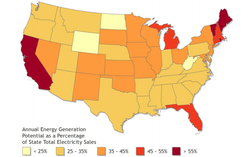 NREL’s study, as we said in December, is based on a module efficiency of 16%, but module efficiency keeps increasing, and several higher solar modules from SunPower, LG, Panasonic and Tesla are currently at 20% and going up — so the total will go up accordingly. Last year at this time, NREL estimated that 40% of US energy needs could be generated from rooftop solar. That’s not including utility scale solar installations. Deployment is still the main issue. SolarCity used the data collected by NREL to illustrate the current deployment of residential solar versus what it could be based on NREL’s study. Each little square represents enough residential solar to power ~80,000 homes: As you can see, we’re just at the cusp of solar deployment. Customers in US States like Florida with governments that are hostile to solar and other green energy development will be able to circumvent utilities with lower cost solar/battery combinations.
That’s where Google’s Project Sunroof’s data explorer tool steps in, allowing anyone to explore rooftop solar potential across U.S. zip codes, cities, counties and states. What does the confirmation of new EPA head, Scott Pruitt, mean for the solar industry? GREENTECH MEDIA — Pruitt, considered a long-time ally of the fossil fuel industry, has promised to quickly withdraw the Clean Power Plan rule developed by the Obama administration in 2014. The CPP sought to reduce carbon emissions from the electricity sector by 32 percent from 2005 levels by 2030, and would have accelerated investment in renewables in multiple ways, including the Clean Energy Incentive Program and the option to price carbon emissions from the power sector. With the Clean Power Plan likely withdrawn this week and the prospects of a carbon tax or cap-and-trade unlikely, federal policy to accelerate renewables will lessen considerably. So is there any cause for panic in solar? I’d argue that there's not. And here are three reasons why. First, during the 2015 budget resolutions, the federal Investment Tax Credit, which provides an immediate tax credit to owners of solar, wind or other renewable generation systems equal to 30 percent of the system value, was fully funded and incorporated in the GOP-led and bipartisan-approved budget through 2022. (Please read this if you’re asking yourself the very logical question, “What if Congress gets rid of the ITC?”) Federal Bonus MACRS benefits were also extended, allowing borrowers to capture up to an additional ~15 percent of system value in the first year. Combined with state depreciation benefits, system owners are able to get up to 50 percent of the cost of their system back in tax benefits by the time they file a year later. Second, certain state markets continue to offer solar-friendly renewable energy credits and tax breaks. Massachusetts, New Jersey and Washington, D.C. all have strong and stable SREC markets, with average prices between $0.25 - $0.50 per kilowatt-hour of energy produced. For context, the average commercial utility rate is $0.10. Other states like South Carolina, New York and Wisconsin have introduced hefty utility rebates, including Duke’s $1-per-watt rebate in the Palmetto State. As a solar financier, we are seeing building costs in the C&I space as low as $1.50 per watt on the low end, meaning that in some instances utility rebates can provide up to two-thirds of the system value as a rebate upon receiving permission to operate, in addition to available state and federal tax credits. Third, and most critically, are the relentless cost reductions the solar industry continues to make. At the end of 2016, solar panels dropped an unexpected 30 percent. Prices have dropped by nearly 60 percent in the last five years, driving a 119 percent growth in installations in the U.S. Outside of the U.S., utility-scale plants are on track to generate some of the cheapest power ever produced. A PPA bid in Dubai recently went for $0.02 per kilowatt-hour -- a 150x net reduction in price since 1975. On the soft-cost side, the emergence of new project origination models are driving down customer acquisition costs, typically a considerable and stubborn portion of residential and C&I project costs. Financing is now cheap and readily available for residential and utility projects, while emerging players are finding innovative ways to expand access to capital into underserved segments of the market, like small-scale C&I. As a result, our internal estimates indicate that solar is at or near grid parity in five states, not including any federal or state subsidies. And 2022 will be an important year. That is the year when the federal tax benefits for solar will fully sunset, and solar will have to stand on its own two legs (not counting available state assistance, of course).
This naturally leads to a crucial question: Will the industry enter a recession when the tax benefits expire? I would argue that the opposite is likely to occur. Using conservative predictions, the cost of solar is expected to fall 50 percent in the next five years, which we estimate will make all 50 states accessible for solar by 2022. The solar industry is likely to thrive in the next few years on the back of falling costs, supportive state policy, and the 2015 budget deal. While the federal government is unlikely to accelerate the adoption of solar for the foreseeable future, the industry will be more than OK. Recently, new U.S. Environmental Protection Agency Administrator Scott Pruitt said that he does not agree that carbon dioxide emissions are a primary contributor to global warming. This is, of course, simply not true. And he should realize that he is hurting the American people and our economy when he tries to inject doubt into proven science. CNBC — The reality of climate change should encourage Mr. Pruitt to be even more clear-eyed and pragmatic, and to recognize that taking action to reduce carbon pollution is necessary to put the nation's economy on a strong long-term path.
Businesses thrive when they make smart decisions based on the best available information. The reality is that climate change is happening now and is having wide-ranging ripple effects on businesses – both on their direct operations and global supply chains. Making evidence-based calculations about the future is what companies call managing risks. Tackling risks creates enormous business opportunities – something we're already seeing as the clean energy economy is creating hundreds of thousands of jobs all across the country. Ignoring risks and long-term trends for short-term benefits is how to drive a company - and the economy - into the ground. The American business community is strongly united in recognizing the need for climate action. Close to 900 companies and investors have called on President Trump and Congress to support the Paris Climate Agreement and low-carbon policies that will help the U.S. achieve its carbon-reducing commitments. Industry giants like DuPont, eBay, General Mills, Mars Inc., Nike, PG&E and VF Corporation are among those telling the Trump administration that the low-carbon future is coming, and businesses need to plan for it. "This doesn't need to be a partisan political issue. Just look at the Climate Leadership Council, a group of prominent Republicans, including former U.S. secretaries of State and Treasury, who are pushing a proposal to put a price on carbon in exchange for reducing other regulations."That's why even oil companies like ConocoPhillips recommend the U.S. stay in the Paris Agreement to fight climate change. It's also one of the reasons dozens of Fortune 500 companies are moving to meet all of their electricity needs with 100 percent renewable energy. This doesn't need to be a partisan political issue. Just look at the Climate Leadership Council, a group of prominent Republicans, including former U.S. secretaries of State and Treasury, who are pushing a proposal to put a price on carbon in exchange for reducing other regulations. While details of the proposal raise significant concerns, it nonetheless sends a powerful message about the seriousness of climate change. As James Baker, the former Secretary of State under President George H.W. Bush said last month, the risks of climate change are "too great to ignore." Mr. Pruitt's denial of the obvious is strikingly out of step. A new Yale University study shows that a strong majority of Americans trust science experts on global warming and, most importantly, support regulating carbon emissions as a pollutant. Many GOP governors across the country are also taking climate action because they see the huge economic and job-creation opportunities of supporting clean energy growth in their states. The wind power industry alone has attracted $140 billion into the U.S. economy over the past decade, with the biggest beneficiaries being Iowa, Kansas, North Dakota, South Dakota and Mr. Pruitt's home state, Oklahoma, which all generated at least 20 percent of their energy with wind last year. Governing is about debating differing approaches to solving the problems facing America. When the evidence is so overwhelming, the debate to be had is about the best way to enact climate solutions, not a know-nothing rejection of the problem itself and reckless disregard for the truth. If Mr. Pruitt were a business executive who denied reality in this way, his tenure in that role would be short lived. |
James Ramos,BPII'm your go to solar energy expert here to guide you step-by-step through all of your solar options. Categories |
James The Solar Energy Expert


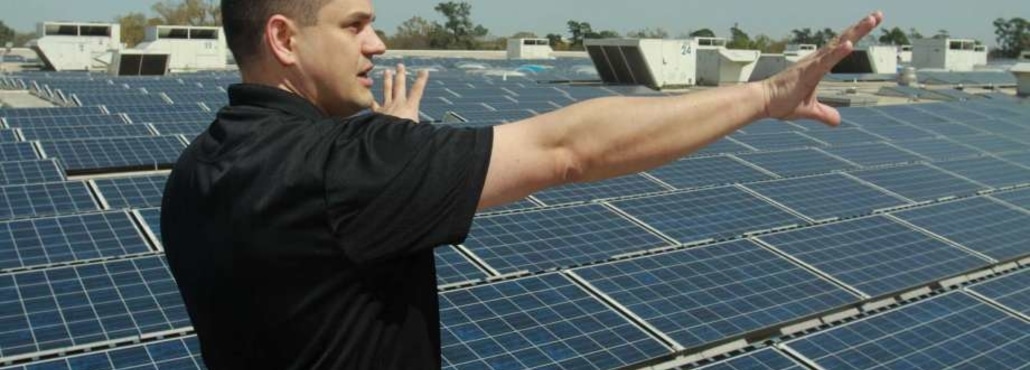



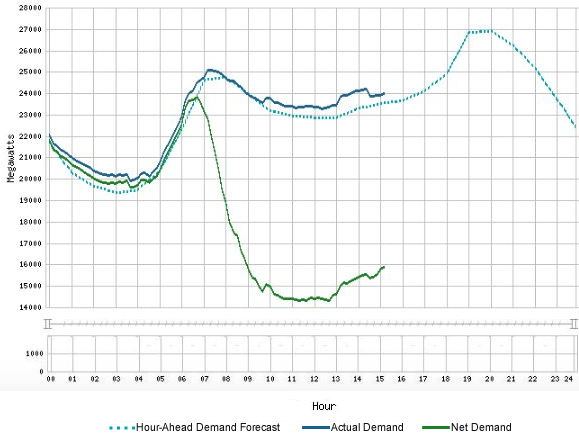
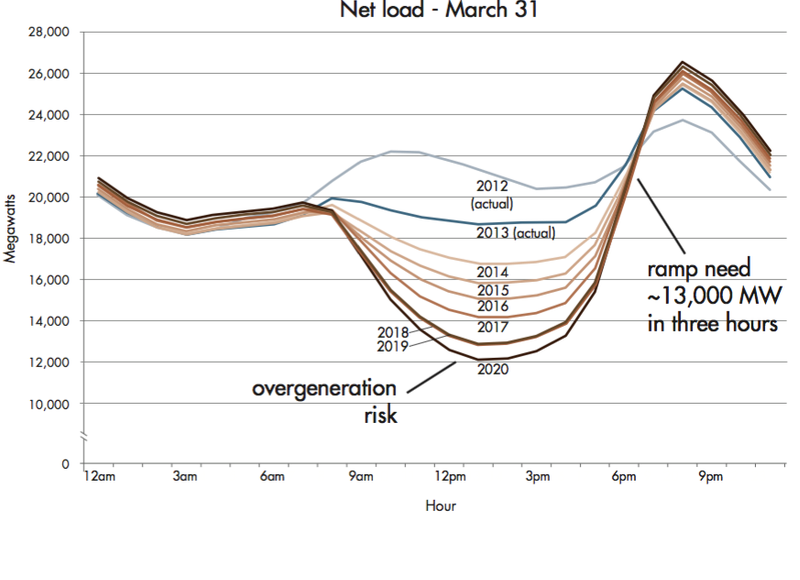
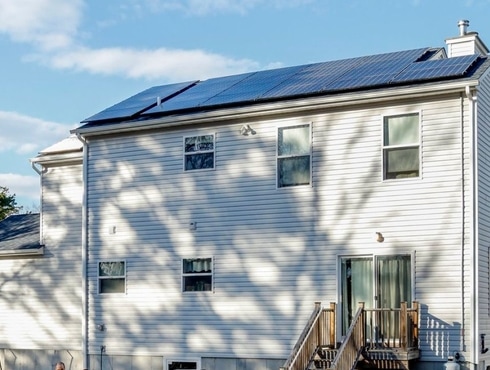


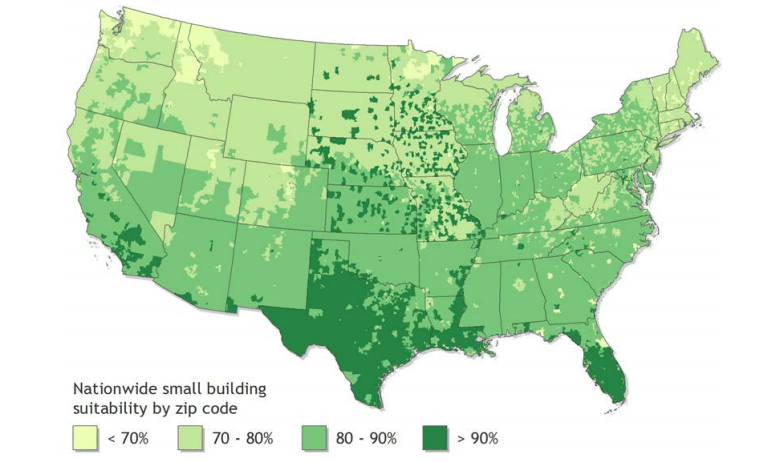
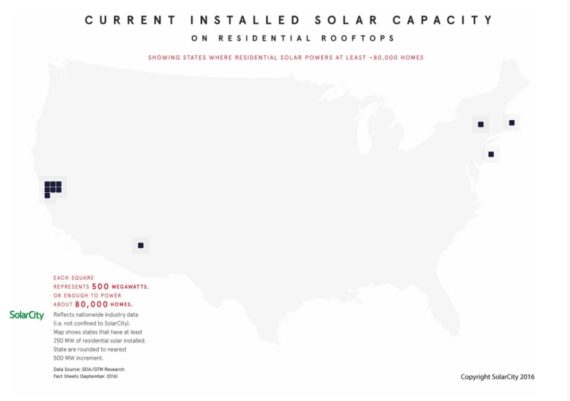
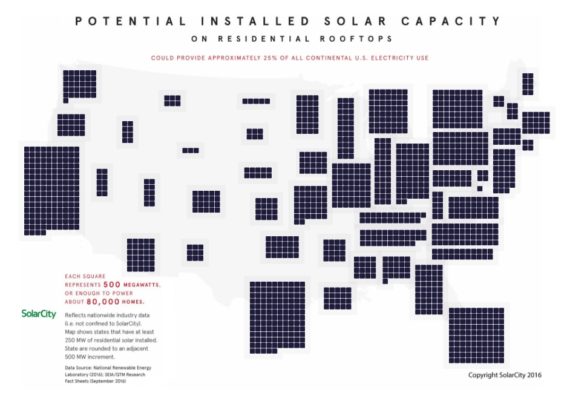
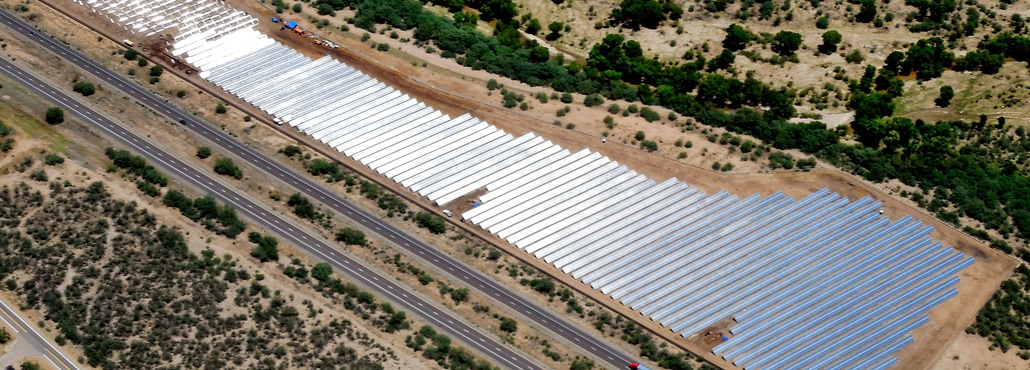
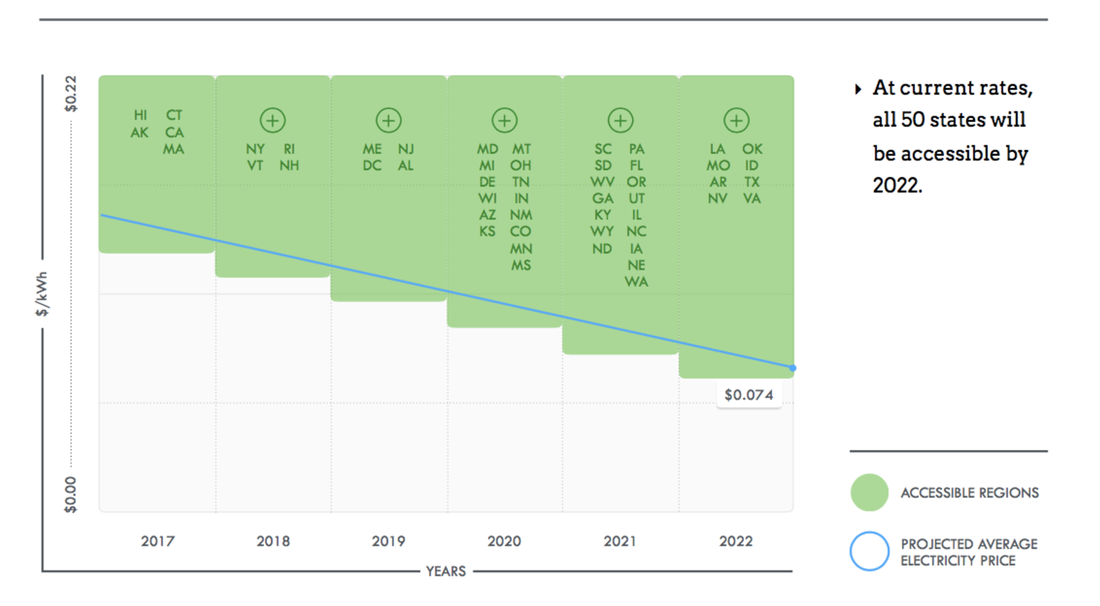

 RSS Feed
RSS Feed
